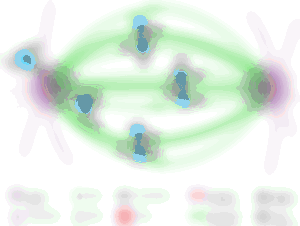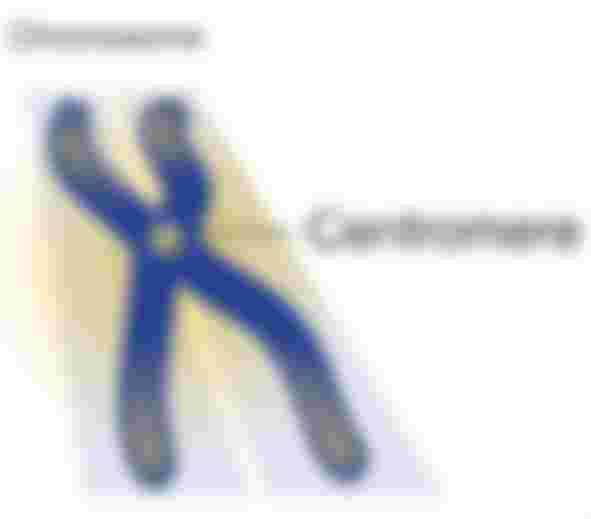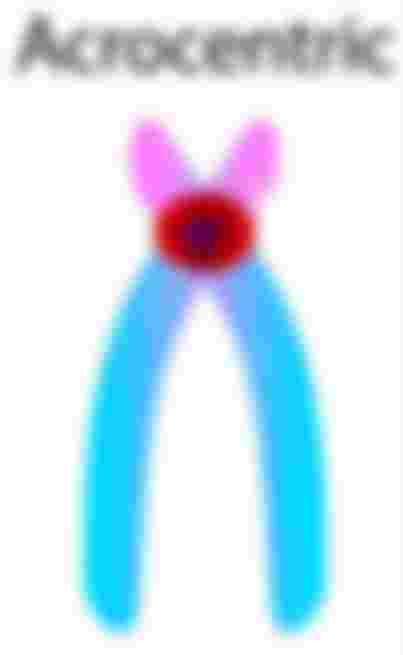
Centromere
Centromere The region where the two sister chromatids of a chromosome appear to be joined' or 'held together during mitotic metaphase is known as centromere. Under light microscope, centromere generally appears as a constriction (a narrowed region) in the chromosome, hence it is also termed as primary constriction (since every chromosome, as a rule, has this constriction). But sometimes, centromeric regions do not take up any stain and they appear as gaps in the chromosome. The reduced staining of centromere during metaphase is understandable as the chromosome regions adjacent to centromeres are composed of heterochromatin (see later).

During cell division, spindle fibers (more particularly, chromosomal fibers) attach to centromeres. As a result, centromeres are the first parts of chromosomes to be seen moving towards the opposite poles during anaphase; the remaining regions of chromosomes lag behind and appear as if they were being pulled by the centromere. Therefore, it appears as if the anaphase chromosome movement is due to the centromeres of chromosomes; hence they are also known as kinetochores. In most species, each chromosome has a single centromere in a fixed position which does not change except due to structural chromosome aberrations.
Therefore, the position of centromere serves as an important landmark in the identification of different chromosomes of a species. Each chromosome is divided into two transverse parts by its centromere; these parts are called arms. In most cases, one arm of the chromosome is longer than the other, hence they are termed as Leng arm and short arm, respectively. Chromosomes may be divided into four classes on the basis of the position of their centromeres:

(1) Metacentric,
(2) Sub-Metacentric,
(3) Acrocentric and
(4) Telocentric.

1. Metacentric Chromosome.
In such a chromosome, the centromere is located in the centre of chromosome, i.e., the centromere is median, so that the two arms of such a chromosome are equal, and the arm ratio is 1. Metacentric chromosomes appear 'V'-shaped during anaphase.

2. Sub-Metacentric Chromosome.
In most chromosomes, the centromere is located on one side of the central point, i.e., the centromere is submedian; such chromosomes are known as sub-metacentric.

3. Acrocentric Chromosome.
When centromeres are located close to one end of the chromosomes, they are referred to as subterminal, and the chromosomes having them are called sub-telocentric or chromosomes.

4 Teleocentric Chromosomes.
Occasionally, in some chromosomes, the centromere appears to be located at one end of the chromosome (i.e., in the position normally occupied by one of the two telomeres); such centromeres are called terminal, and the chromosomes having them are known as telocentric chromosomes.
Submedian chromosomes appear either similar to 'V' or 'j' during anaphase depending on how close or far-removed their centromeres are from the central points of the chromosomes. Similarly, acrocentric chromosomes may appear either 'j' or 'rod-shaped' during anaphase depending on the closeness of their centromeres to the telomere. In contrast, telecentric chromosomes always appear 'rod-shaped' during anaphase.






